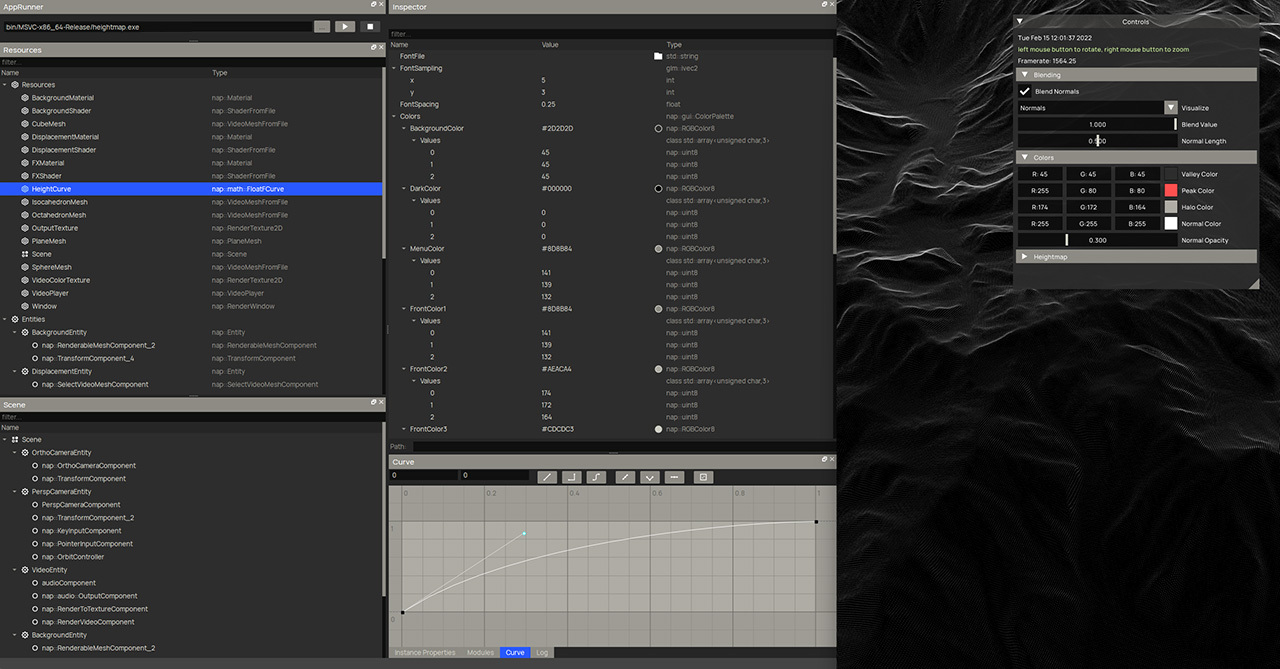NAP is an open source, low overhead, real-time control & visualization plaform. Create fast, modular and (above all) stable applications to interact with the world around you.
Use any protocol (OSC, MIDI, Artnet, WebSocket etc) in combination with a 3D graphics and sound engine to create real-time content that is transmitted to any device you like. NAP is built to scale up to a large number of input and output devices: many displays, many lights, many speakers, many sensors, many servos.
Features
NAP Framework ships with many useful modules, including: a Vulkan 2D/3D render engine, a Vulkan Compute module, a multi-channel audio engine for music playback, recording and analysis, a sequencer to control parameters in real-time, an editor to author application content, a web-portal to control and monitor NAP applications in a browser, a system for creating and loading presets, a video player powered by FFmpeg and a Python programming interface.
NAP also has built in support for many common protocols and standards, including: WebSocket, MIDI, OSC, Artnet, Serial, EtherCAT, OpenCV and SQLite. NAP has been battle tested in production for years. For more information about NAP, how it is commonly used and what it can do for you, visit the nap.tech website.
Philosophy
NAP is completely data driven and heavily influenced by modern game engine design, with one exception: it does not dictate any sort of pipeline. This allows NAP to run on any type of device: from low-power, energy efficient ARM computers such as the Raspberry Pi to industrial PCs and x86 gaming rigs.
NAP applications are lean and mean: only package and ship what you actually use. On top of that NAP is easy to extend: build you own modules, resources, devices and components. NAP wants you to be safe and validates data for you on initialization. Applications are also responsive: hot-load content changes directly in to the running application. On top of that NAP is completely cross-platform and supports all modern desktop environments.
Documentation
NAP documentation can be found online at docs.nap.tech. Take note that the installation and project creation instructions on that website apply to the binary (compiled) NAP package only. Follow the instructions in this document to build and work against NAP Framework from source.






Discussion (1)
This sounds amazing!